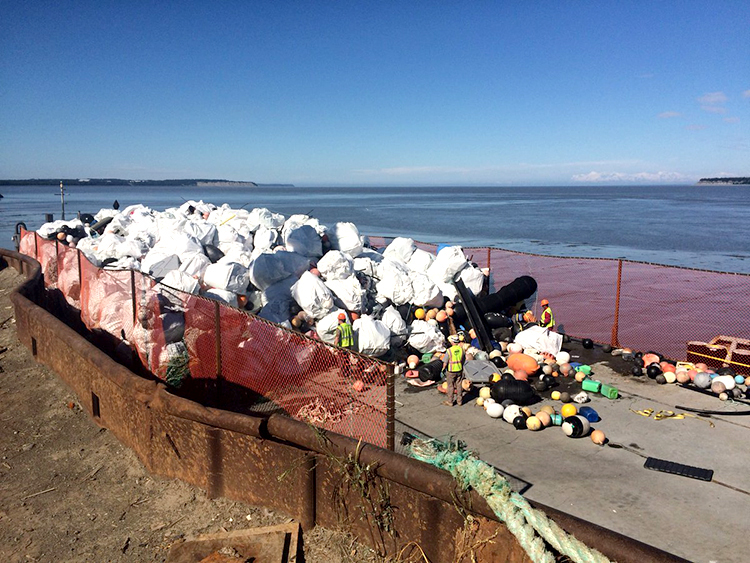
This Is What 200 Tons of Marine Debris Looks Like … From Just 12 Miles of Alaska’s Coastline

A cleanup crew recovered 200 tons of trash from just 12 miles of Alaska‘s coastline around Prince William Sound.
Gulf of Alaska Keeper (GoAK), a nonprofit dedicated to picking up debris around the state, filled 1,200 “super sacks” and collected thousands of buoys, marine debris specialist Scott Groves said. The group spent a month at Montague Island and two weeks at Kayak Island to collect the trash, KTVA Alaska reported.
Groves, who was interviewed by KTVA after they were done collecting the trash, said, “It’s such a pristine place out there also, so being able to fly over where we’ve cleaned and to see what we have done is a good feeling.”
The 200 tons of trash was shipped to Anchorage on a barge. It took an entire day to unload the trash. Now, GoAK will spend at least 10 full days sorting the trash, enlisting more than 100 volunteers.
This is what 200 TONS of trash looks like…from just 12 miles of Alaska's coastline. #MarineDebris #PleaseRecycle pic.twitter.com/IN8897tlmJ
— Heather Hintze (@HeatherHintze) July 14, 2016
Groves hopes to pick out everything that can be recycled. He said as much as 80 percent of the total debris might be recyclable.
“With the amount of plastic everyone uses in today’s age, a lot of what we find is single-use plastics,” Groves said. “So just taking one water bottle and being able to reuse that again is huge.”
The presence of plastics in the ocean is plaguing the world. A report completed by UK-based Eunomia Research & Consulting found 80 percent of the annual input of plastic litter comes from land-based sources. The remaining 20 percent are plastics released at sea, such as fishing gear.
Even worse, 94 percent of the plastic that enters the oceans ends up on the sea floor.
Alaska’s coastline isn’t the only one covered with debris. In recent weeks a “glacier of trash,” as local authorities described it, is inundating beaches in Hong Kong. The situation is so bad that trash on one of the affected islands can be seen from space.
Hong Kong's Beaches Teeming With Plastic Trash, Can Even Be Seen From Space – EcoWatch https://t.co/EUQwI38dIW @ShaunFrankson @5gyres
— EcoWatch (@EcoWatch) July 14, 2016
Between July 1 and 9 alone, about 172,000 pounds—or 8 tons—of trash were collected from Hong Kong beaches. That’s 40 percent of the amount collected in Alaska.

 233k
233k  41k
41k  Subscribe
Subscribe 
